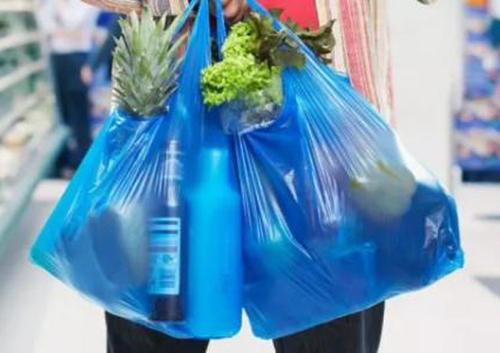
Source: Linktesting Instruments Co., Ltd
Continuity of policy documents
On the 19th, the National Development and Reform Commission of China and the Ministry of Ecology and Environment jointly issued a document to mention the plastics restriction order. This is the first time in 2008 that the national restrictions on plastics were raised again in 12 years. The new version of the Plastic Limitation Order is the biggest difference from the past. It is the first time that the specific requirements and established goals of prohibiting the restriction of plastic products have been clearly put forward. Various plastic products have detailed requirements. This is more instructive and possible to implement than the content that was only implemented in 2008 to restrict the production, use, and sale of plastic shopping bags. In contrast, in 2008, the plastic limit order documents are, in a sense, more inclined to form a public awareness of restricting the use of plastics among the general public.
Difficult road
Regarding the plastic restriction order that was officially implemented in 2008, the public was disappointed with it. They believed that in the ten years after implementation, the total use of plastic bags by the society had not been reduced. According to the statistics of the Bureau of Statistics, during the ten years from 2008 to 2018, the annual output of plastic products has maintained a positive growth trend. Although the growth rate has slowed down, the cumulative growth of plastic products has exceeded 70 million tons in 2014. The consumption has exceeded 40kg, exceeding the world average per capita for the first time.
As a lightweight, cheap, and easy-to-mold industrial product, plastic products can meet diversified consumer needs and save business operating costs. The development of emerging industries based on the Internet based on e-commerce has also contributed to the rapid growth of plastic products. Data at the end of November 2008 showed that the number of Chinese Internet users was 290 million and surpassed that of the United States for the first time. As of 2018, the number of Chinese Internet users has exceeded 830 million, and the number of online shopping users has reached 610 million. It can be said that with the development of the consumer interconnection model, the consumption of plastic products has continued to increase. Taking the most common online takeaway business as an example at present, institutional data show that in 2018, China's online takeaway business will theoretically generate a total of 4.224 million tons of plastic product waste, a total of three times the previous year and accounting for the entire year. The output of plastic products is about 6%, including 3.6 million tons of plastic boxes, 492,000 tons of plastic bags, and 132,000 tons of plastic spoons. .
The new plastic limit order is here, and what it can limit. It can be seen that the restrictions on the use of disposable plastic tableware and express plastic packaging tapes in this plastic restriction order are clearly listed. In addition, for the production end of plastic products, on the one hand, it continues the requirements of banning the production and sale of ultra-thin plastic bags in 2008, and on the other hand, it increases the terminal bulk of ultra-thin polyethylene agricultural films and medical waste plastic recycling. Prohibition requirements for the production of products and ordinary consumer products such as disposable foamed plastic lunch boxes, plastic cotton swabs, and plastic beads.
As early as 2010, according to the China national production capacity catalogue of the Ministry of Industry and Information Technology, ultra-thin commodity retail plastic bags have been included in the phase-out capacity catalogue. At present, the thickness and quality requirements of plastic bags circulating on the market in cities above the prefecture level meet the standards. The impact on the production side may not be obvious. After the disposable foamed plastic lunch box was eliminated in 2000, the production technology of the foaming agent changed from Freon to butane, and after being restored again in 2013, the current disposable foamed plastic lunch box was again Once included in the list of prohibited production and sales. At present, the raw materials of foamed plastic lunch boxes are mainly EPS. The consumption of foamed plastics of this type is mainly concentrated in the fields of packaging of electrical products and thermal insulation building materials, while the consumption of food packaging containers accounts for less than 5%, of which consumption of foamed tableware The amount is very scarce. According to data from the China Petroleum and Chemical Industry Federation, domestic foam plastic output in 2018 was 2.4243 million tons, a year-on-year increase of 10%, which also includes EPS, EPP, EPO and other functional foam plastic varieties.

How much space is there for alternatives
For restricting plastic products, actively seeking relevant alternatives may be the key to solving the problem. Faced with a large consumption of take-out plastic meal boxes and express packaging products, the use of products made of other materials will face constraints in terms of resources, costs, profits and other factors.
Cloth bags and degradable packaging face high costs on the one hand, and on the other hand, there are more restrictions on the use scenarios. At the same time, the production technology of degradable packaging still has a large gap compared with actual demand. At present, the production of degradable packaging products still stays at the technical level of adding cellulose, photosensitizers and other additives that reduce its stability to plastics. Degradability can only reduce the impact on the environment through the industrialization of recycling and reuse. Pressure, but not really environmentally friendly products that achieve full degradation.
What is more worth mentioning is the solution of paper packaging products as an alternative. Because the raw materials of paper products come from natural wood or other plant fibers, the pressure on the environment is significantly less than that of polymer products such as plastic. It is expected that during 2020-2025, the demand for paper packaging products will show a substantial increase. According to Zhuochuang data statistics, the total production capacity of corrugated and boxboard in China's paper packaging products in 2019 will reach about 70 million tons, which is still increasing year-on-year; however, the level of consumption has declined in recent years. After the demand peaked in 2017, it has shown a downward trend for two consecutive years. In 2019, consumer demand has decreased to about 47 million tons, a decrease of about 1.5% compared to 2017. It is believed that during the promotion of the plastic limit order, the demand for paper packaging will increase again. Based on the current annual use of 4 million tons of plastic bags and takeaway packaging, taking into account the paperlessness of the express delivery related business and the reuse of packaging supplies, It is expected that the plastic products that can be replaced by paper packaging in the future account for about 6% -10% of the total plastic products, and the order of magnitude is about 7 million tons.
WWW.LINKTESTING.ORG